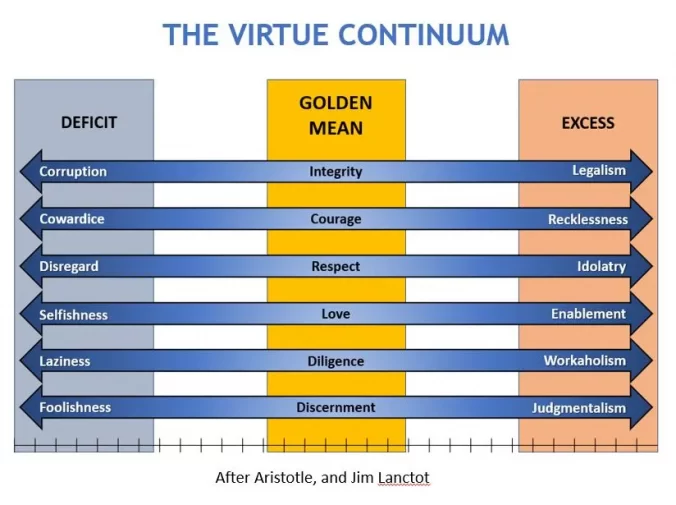Along the vein of ancient Athens, Aristotle is one of the most significant philosophical thinkers in history. Aristotle, who spent much time in Athens, was the student of Plato.
Why is Plato important you ask? Well, if you remember my previous blog post, you should recall the Sophist Movement. Plato was the first philosopher to substantially refute the Sophists’ claims about morality in his work, The Republic.
Aristotle, following after his teacher, takes to heart the idea of inherent justice and morality. He then presents a series of lectures that are later compiled into what is known as the Nicomachean Ethics. An idea from this work that I find most interesting is the concept of “the golden mean.” In day-to-day life, moral situations are not often black and white– there is moral grey. Whereas many philosophers in Aristotle’s time would say that there is either no morality or absolute right and wrong, he poses a different approach.
Aristotle starts with the virtues. Take, for example, courage. Now, put courage in the middle of a scale. On one side there is excess, and on the other, deficit. By creating this mental image, Aristotle illustrates the ideal and two extremes. Since it is much easier to grasp extremes and ideals, exemplifying those concepts provides context for understanding vague ideas such as “moral gray”. In action, it looks something like this: the ideal is courage, the excess is recklessness, and the deficit is cowardice.
For further reading: https://plato.stanford.edu/entries/aristotle-ethics/

Alyssa, you do a really nice job of presenting this idea. I want to emphasize another part of the class blog “recipe”: connection to the present. So here’s a question for y’all in the “spirit” of blogging: is there a meaningful connection between Aristotle’s idea of the “golden mean” and the contemporary news media’s emphasis on “both sides of the story”–on locating the truth as somewhere between two extreme views/positions?